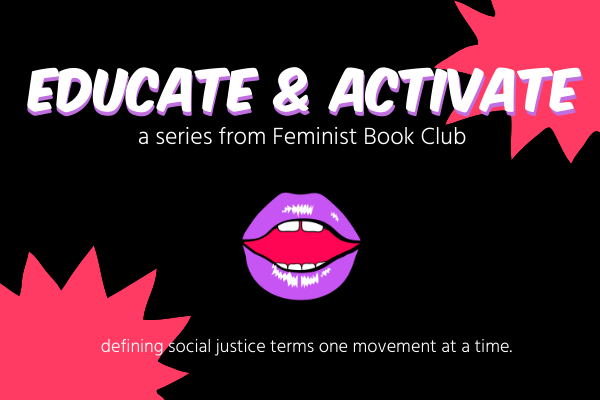Feminist Book Club blog contributors are working together to create posts as an “Educate & Activate” series. We will define a term or movement, provide historical context, and give you additional resources to learn more. We believe that an educated populace can be better activists, accomplices and co-conspirators. It is important to note that these are meant to be brief descriptions and not inclusive or exhaustive of all resources. We urge you to continue being curious and continue learning more.
Definition
What is Feminism? Broadly, feminism is defined as “the theory of the political, economic, and social equality of the sexes.”
First usage
First known usage of the word feminism was in 1837 by Charles Fourier, the French utopian socialist and philosopher. He coined the word “féminisme” to advocate the emancipation of women. The first recorded use of the word in English was in Blackwood’s Edinburgh Magazine in 1898.
Historical context
A text to understand the history of feminism is Mary Wollstonecraft’s A Vindication of the Rights of Women (1792) which argued for the rights of women and one of the earliest works of feminist philosophy. A convention held in July 1848 in Seneca Falls, New York was guided by the “Declaration of Sentiments,” crafted by Elizabeth Cady Stanton, the wife of an abolitionist. It argued that all men and women had been created equal. Another important text is Sojourner Truth’s speech, “Ain’t I a Woman?” delivered at the 1851 Women’s Rights Convention in Akron, Ohio that argued that women, black or white, were equal to men.
Feminism can be divided into three waves/movements for better understanding. A New York Times article by Martha Weinman Lear, “The Second Feminist Wave” first used the wave metaphor. Accordingly, the first wave (1848-1920) focused on achieving political equality and was led by the suffragettes of the late 19th and early 20th centuries. It began with the Seneca Falls Convention and ended with the Congress passing the 19th Amendment allowing women to vote.
The second wave (1963-1980s) begins with Betty Friedan’s The Feminine Mystique published in 1963. It discussed systemic sexism where women’s’ place was in the house. She also argues that women were unhappy because they could not exercise their intellectual and creative freedom. The goal here was social equality. Some of the achievements in this era were: The Equal Pay Act of 1963 that aimed to abolish the gender pay gap, married and unmarried women had the right to use birth control, Title IX provided educational equality, and Roe v. Wade (1973) assured reproductive freedom.
The third wave (1991-unknown) began with the Anita Hill case in 1991, which brought sexual harassment at work to the fore. Third-wave “feminists sought to question, reclaim, and redefine the ideas, words, and media that have transmitted ideas about womanhood, gender, beauty, sexuality, femininity, and masculinity, among other things.” There is still an ongoing debate that a fourth wave is on, and is completely online. This wave focuses on social media including the recent #MeToo movement, the March for Women, creating more global and intersectional feminism.
Resources for Further Education:
Sister Outsider by Audre Lorde
Living a Feminist Life by Sara Ahmed
Feminism Is for Everybody by bell hooks
History of feminism
We Should All Be Feminists, video and book by Chimamanda Ngozi Adichie
Video playlists on feminism and ideas of feminism
We’ll be investigating each wave in depth in future Educate & Activate posts!


